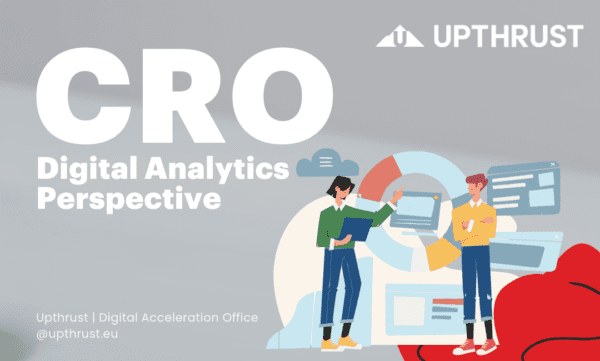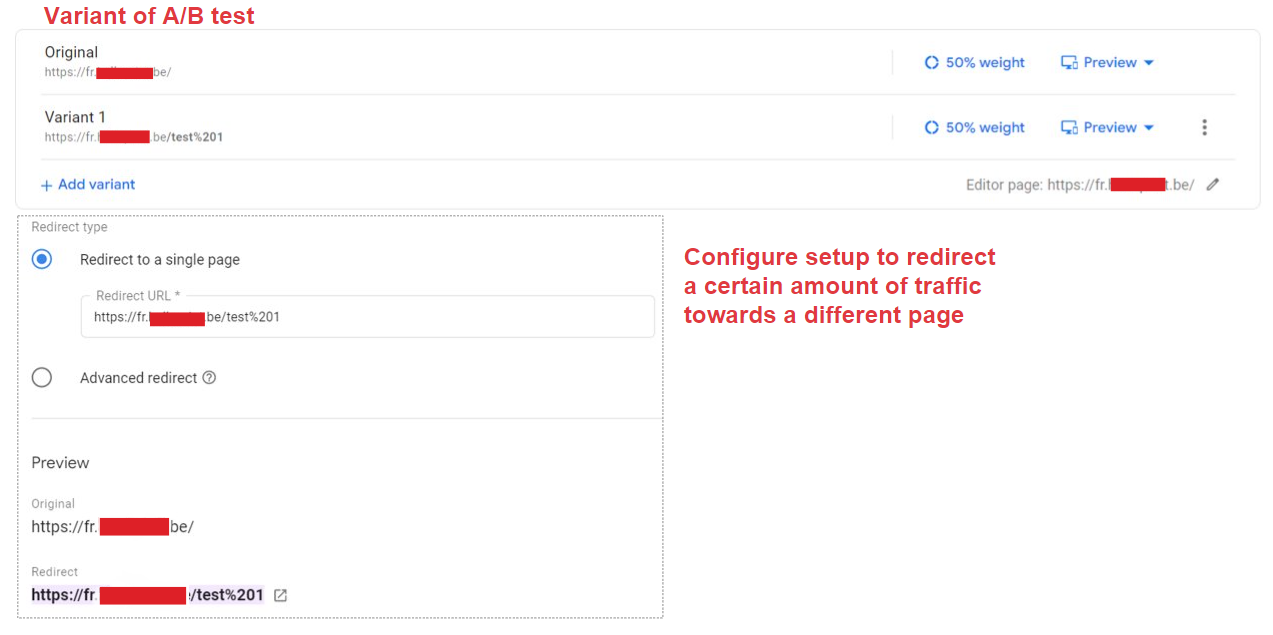Conversion rate optimization (CRO): A digital analytics perspective

We’ve already looked at conversion rate optimization from a growth marketing and a broader digital marketing perspective in previous articles. In this one, we’ll look at CRO from a digital analytics perspective.
Sprinting: From Zero to One
It’s important to note that growth marketers tend to work on different timelines than most digital analytics experts. Growth marketers work on shorter timeframes, in a sprint mindset, aimed to kickstart or boost marketing efforts. Digital analytics experts, usually work on a longer-term, “always-on” mindset.
Running A Marathon: From Ten Thousand To Beyond
The ambition of a digital analytics expert is more comparable to that of a marathon runner than a sprinter/ Digital analysts are continuously optimising already high-volume web and app applications to drive incremental revenue.
So what’s the CRO starting point for a digital analytics expert then?
Conversion rate optimization usually becomes worthwhile for a digital analytics expert when an application already is receiving at least 10.000 monthly visitors. Below that point, conversion rate optimisations are usually not worth the larger time and tooling investment required from a digital analytics point of view.
CRO: An analytical definition
So what is conversion rate optimization for a digital analytics expert?
“Conversion rate optimization is a process where individual variants of digital applications are tested against one another to increase conversion rate and customer experience.”
The emphasis lies here on converting the traffic and collecting information about the drivers of conversion. CRO experimentation then builds on three important pillars:
- Business strategy
- Experimentation setup
- Reporting and analysis
By understanding the business strategy, an analytics expert can define the necessary experiments and then report on them with objectivity.
The CRO process
To optimise a digital application, an analytics expert will make smart use of experiments following a predefined process, which looks like this.
Types of CRO experiments
There are 4 main types of CRO experiments in the analytics world:
- A/B test: An experiment comparing two alternative designs with one variation, usually the current design and the variant design.
- Multivariate test: An experiment comparing the result from a set of variations to see how it affects the site visitors’ behaviour.
- Redirect test: An experiment comparing two different web pages based on their URLs or paths.
- Personalization: An experiment in which the website is presented differently to different individualized groups.
Let’s dive a bit deeper into each one of these.
A/B testing
A/B testing, also known as split testing, is a CRO test that compares two different website versions of the same landing page to see which one increases the conversion rate the most. Visitors to the website are shown two versions, with half seeing version A and the other half seeing version B.
As in the example above, a winner is chosen after the experiment has run for a significant amount of time with sufficient volume to confidently extrapolate the findings.
Redirect testing
Redirect tests, also known as split-URL testing, consist of two separate, published web pages. Performance metrics and key performance indicators (KPIs) are tracked and compared between these two pages to determine which one had the greatest lift in desired conversions.

Google Optimize, Crazy Egg, Optimizely, and VWO are the most popular CRO platforms for redirect testing. Redirect tests, for the attentive reader, are indeed a type of A/B test.
Multivariate testing
Multivariate testing, or MVT, is a type of CRO test that helps you determine the best combination of elements for converting your customers. That is, instead of comparing two different website versions, the multivariate test compares multiple different website variables.
Personalization
In digital analytics, personalization means providing customers with tailored experiences based on their previous behaviour. To do this you must first collect user behaviour data, to then personalise your digital experiences to their individual preferences.
This can be accomplished by utilising behaviour analytics tools like Google Analytics, Adobe Analytics or Piwik Pro and then feeding this data back into your CRO tools.
In this example, a new visitor is shown a different version of the website than a returning visitor. With improved messaging to make the new visitor feel welcome, and as a result, increase the conversion rate.
Client-side VS Server-side CRO
The above list of experiments are all examples of client-side experiments. However, in the last years, server-side experimentation has been gaining popularity. Let’s have a look at what the differences are between these two.
Client-side CRO
Simply put, you run a client-side test when you create page variations directly on the user’s browser rather than your server. Javascript is then used by smart client-side tools to create test page variations. Client-side a/b testing is so named because these alterations and changes are made in the visitors’ browsers.
Server-side CRO
Server-side experimenting, on the other hand, renders the test on your web server itself. The page variations are then delivered to the user’s browser, where no further changes are made. The pages under test are retrieved at random from the server and displayed to the visitor.
This enables you to collect and store data on your system directly. As a result, you have much more freedom in the changes you can make and control over various aspects of the experiment.
CRO Tools
When it comes to tooling, to do all this CRO testing, building the a mature data stack can be quite overwhelming with so many tools to choose from.
The main tools we use for large scale CRO projects at Upthrust are:
- Google Optimize
- Google Optimize 360
- Unbounce
- Insider
- Kameleoon
- Visual Website Optimizer
- Optimizely
- AB tasty
- Adobe Target
We help clients bring clarity to this overload of technical marketing tools and choose the most robust set-up allowing them to better drive business results. When in doubt about the complexity of your tech stack, remember that simple scales, fancy fails.
Typical client questions
So what are some typical client questions we receive as digital analytics experts? We listed the most common, high impact questions, here below:
- Where do users drop off?
- How is a digital product performing?
- Where is bottom-line revenue growth coming from?
- What is the ROI of a specific campaign?
By deriving the answers to these questions, from correctly measured and analyzed data, you can sleep on both ears that your optimisations will be meaningful and drive extra revenue.
Examples of CRO Projects
Without going into too much detail, these are some of the most impactful CRO projects our digital analytics experts know how to perform very well:
- Cross-platform tracking (ID resolution) to better optimize conversion paths and increase personalisation for large e-commerce players.
- Implementing company-wide data-driven cultural changes, optimising the digital experiences on interconnected application flows.
- Feeding recommendation engines with rich data for driving entire media platforms with personalised notifications.
Now, if after reading this brief introduction to digital analytics, getting started sounds like an overwhelming task. Know that it doesn’t have to be. Here are a few mindset changers that can help you overcome the dreaded analysis paralysis for getting started with measuring and optimizing your digital experiences.
